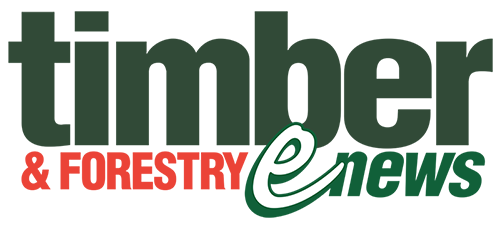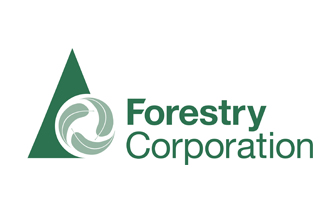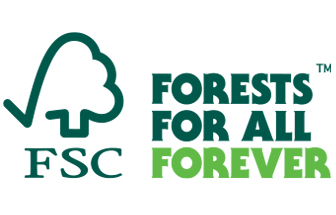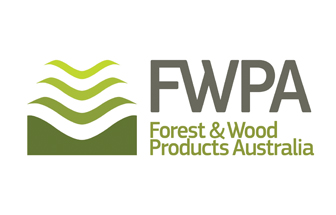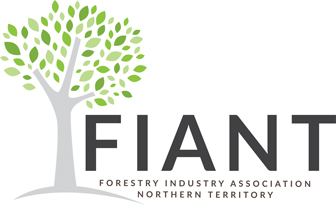US LAB’S TOOLS AND KNOW-HOW KEY TO
DETECTING ILLEGAL TIMBER IMPORTS
Ashland, Oregon in the United States, is the unexpected home of the country’s only full-service forensic laboratory devoted to tracking illegally transported animals and plants.
In a report to Erik Neumann (Jefferson Public Radio) Scientist Ed Espioza discussed how the lab is employing a new strategy to get forensic tools to US ports to stop the illegal timber trade.
Mr Espinoza stood inside a 9-metre-long trailer next to a whirring machine about the size of a commercial photocopier. The device is known as a DART time-of-flight mass spectrometer.
“This is the Ferrari of mass spectrometers,” Espinoza said. “It gives us very accurate data.”
The trailer – a horse trailer-turned mobile lab – was parked outside the U.S. Fish and Wildlife Forensics Laboratory in Ashland. Staff here help the Fish and Wildlife Service solve crimes by doing DNA analysis on illegally sold plants and animals.
Espinoza said the mobile lab was a new attempt by forensic scientists like him to help get scientific instruments to the places where they’re most needed.
The Ashland lab is well known for its collection of taxidermied animals. A tall warehouse on site is filled with everything from scaly pangolins to tiger pelts. Over the years, Espinoza has seen trends in the illegal animal trade, including elephant ivory, bear bile used in traditional Chinese medicine and beluga sturgeon caviar from Russia. The latest trend, he said, has been timber from places like Southeast Asia, Africa and Amazonia.
Forensic scientist Ed Espinoza stands outside a modified horse trailer-turned forensic lab at the U.S. Fish and Wildlife Forensics Laboratory in Ashland.
IDENTIFYING THE ‘CHEMICAL FINGERPRINTS’ OF TREES
Nearby, in one of the lab’s libraries, drawers are filled with samples of ebony and purple heart. Espinoza held up a small slab of bulnesia from Argentina, one of the world’s hardest woods.
“These samples specifically came from a very large container leaving Madagascar,” he said, showing off the contents of a long metal drawer filled with slices of rosewood.
Forensic specialists use collections like the Ashland lab’s as DNA comparisons against samples of potential illegal timber.
In the past, there’s been a gap in this sort of reference material, according to Marigold Norman, director of research at World Forest ID, an organization creating a geolocated database of wood commodities.
“It’s very difficult to say this timber came from this specific place unless you can compare it to something that actually came from there,” Norman said.
Espinoza stands in the U.S. Fish and Wildlife Forensics Laboratory where wood samples have been collected from around the world as references to test for potential illegally transported timber.
Cady Lancaster co-founded the Wood Identification and Screening Center at the Ashland lab, where she previously worked as a wildlife forensic scientist. She said forensic science helps enforce current laws by identifying illegal logging operations.
“We know it’s making it into the U.S. But unless you can prove it, you can’t catch the bad guys,” Lancaster said.
Illegal logging contributes to deforestation and biodiversity loss. It funds organized crime, according to Espinoza. And cheaper illegal logging undercuts prices for sustainably managed timber, Lancaster said.
She helped develop a method of analyzing what she described as the “chemical fingerprints” for the more than 60,000 species of trees in the world. Using a mass spectrometer allows scientists to weigh the molecules of an unknown material, which can then be matched to the lab’s database.
“We just hold a wood sliver with tweezers and let a 660-degree Fahrenheit helium ion stream blaze over the wood,” Lancaster said.
“That’s going to burn the wood away, release all of the molecules into the air so they can get sucked into the mass spec. It happens nearly instantaneously.”
Laws such as the Lacey Act and an international agreement known as CITES (Convention on International Trade in Endangered Species of Wildlife Fauna and Flora) are meant to prevent protected tree species from being sold in the U.S. But customs authorities at ports of entry can’t easily tell if something is illegal or not without the right testing tools.
The mobile lab also contains a digital microscope so forensic scientists can study the anatomy of wood samples as well as import permits to see if they’ve been forged. The equipment and modification cost about $600,000, Espinoza said.
Both Norman and Lancaster agreed that being able to deploy the trailer from Ashland to ports of entry will be helpful for customs agents.
Source: OPB/ Jefferson Public Radio
